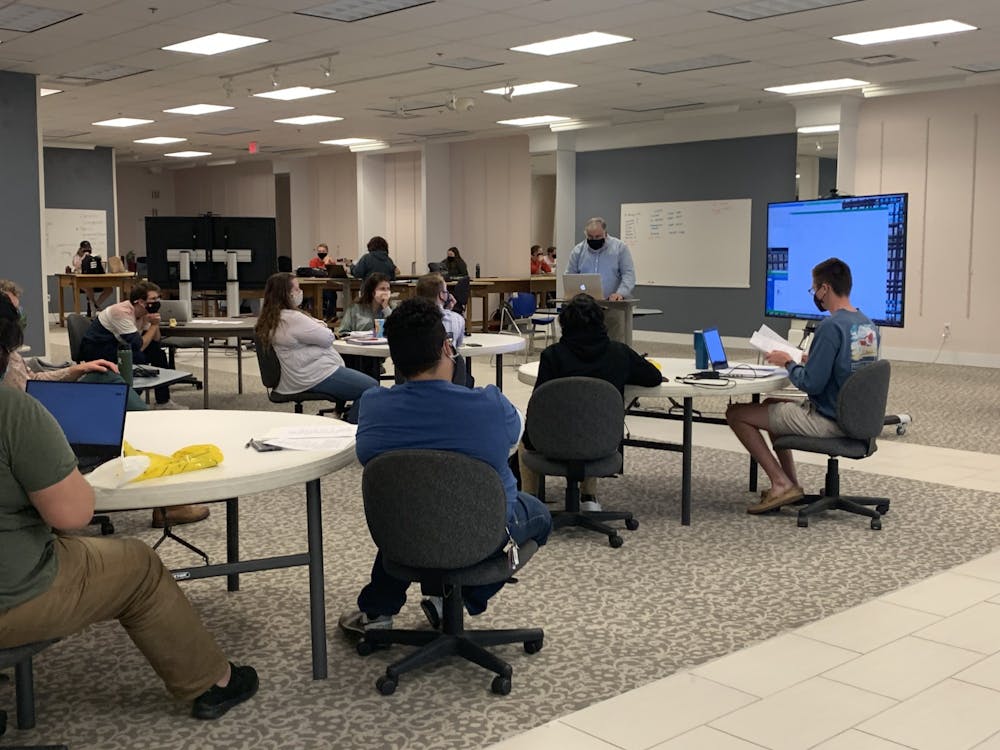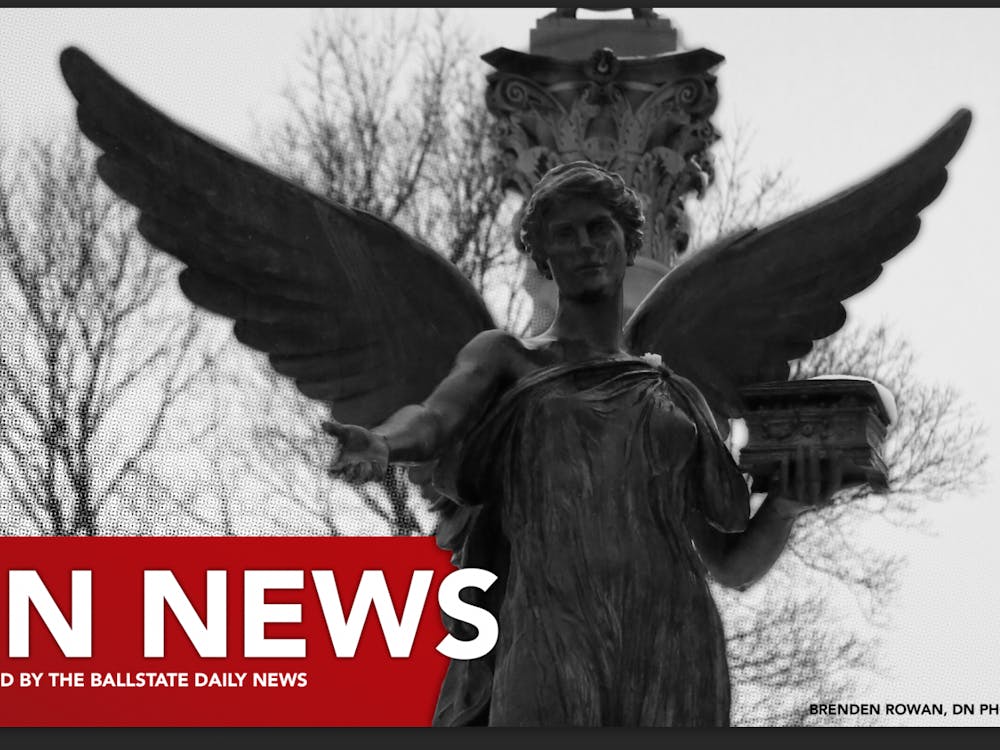Ball State senior Jeb Reece rolls up to the nearly empty Muncie Mall parking lot. No, he’s not looking to shop. The urban planning major is headed to class. Yes, at the mall.
Reece walks in past a mix of storefronts. Some, like Country Charm Boutique, are vibrant with seasonal orange pumpkins. Others, like Victoria’s Secret, are an empty shell with no merchandise inside — one of 17 stores that have closed in recent years.
Reece veers into a space with ceiling-high glass windows. Fluorescent lights illuminate his peers, seated at round plastic tables, as Scott Truex, associate professor of urban planning, starts class with a PowerPoint.
“It’s like being in a 2008 Disney XD sitcom, you know, school at the mall,” said Reece, a fourth-year student majoring in urban planning.
Truex’s lecture focuses on data the students need to gather over the weekend. The class of 30 needs to gather statistics on Muncie demographics, architectural plans and historical documents about Muncie’s demographics and past architectural plans.
The mix of undergraduates and graduates are working alongside Muncie city and Delaware County on Muncie’s next comprehensive plan and Muncie Action Plan (MAP), which will guide the city’s development for the next 20 years.
The class is set in the mall for a reason, said Truex, department chair of urban planning. It is a store-front studio, so the class and its work can be visible to the Muncie community.
Students are in a data-gathering phase, but over time, they plan to interact and dialogue with the community. The glass windows of the classroom will eventually feature large graphics of potential plans. The class will host public forums to gather feedback about their proposed plans with dates still to be determined, Truex said.
The class is focusing on two plans: the comprehensive plan and MAP, which are designed to shape the future of Muncie for the coming 20 years, Truex said.
The comprehensive plan looks ahead at land use. Any future decisions about residential, commercial or industrial land use will be made based on this plan, said Marta Moody, executive director of Delaware-Muncie Metropolitan Plan Commission.
As a complement, the MAP is a guide for the community to “help improve quality of life for all residents,” said Heather Williams, secretary for the MAP Board of Directors and Ball State associate director for community engagement. Created in 2010, the MAP has continued to evolve to build community pride while addressing the city’s greatest challenges, like poverty, hunger and drug addiction.
Both plans were due for an update this year, and because of this, the city decided to pool resources and plan them together, Williams said.
“Having a plan in place for our community ensures we are conserving resources while having the biggest impact possible,” she said.
But she and others involved in the process wanted student input.
Williams said she knew Truex would be the man for the job. Truex leads a class on comprehensive plans. His immersive learning experience allows students to dig into plans that improve cities across the state.
When the pandemic hit in spring 2020, Truex said, he was unsure how he could offer students an equally engaging experience during the fall semester with COVID-19 restrictions. Williams connected with Truex to offer the opportunity for his class to work with Muncie.
Working with Muncie to enhance these two plans while at the socially-distanced yet public mall location allowed Truex to move forward with the hands-on, real-world experience for urban planning majors.
The 8,900 square-foot space in the mall allows students to easily socially distance and welcome speakers and community partners into the studio for collaboration. Without it, Truex said, the students wouldn’t be able to have the hands-on experience these opportunities provide. The city, Delaware-Muncie Metropolitan Plan Commission, the Ball Brothers Foundation and Ball State’s R. Wayne Estopinal College of Architecture and Planning partnered to fund the mall studio.
Although the city will work with a consulting firm to fully develop any plans, Truex said his class is doing a lot of the groundwork to ensure the final plans are thoughtful, comprehensive and practical.
“A consultant company from out of town has a limited amount of time they can spend on a project. It’s just billable hours,” Truex said. “With 15 students, [we have] the opportunity over a semester to explore ideas.”
Truex said his class can look into ideas that stretch the imagination of the community, such as sustainability.
While the focus of the class is on the two plans, Truex said the comprehensive plan could even include recommendations on how to revive the Muncie Mall. Many stores have opened and closed within the past few years at the mall, with Macy’s closing last winter.
Reece said having class at the mall has inspired him to make plans to help better the city and reminded him that the work he’s doing can be beneficial.
“It’s interesting to be working and then look up and you have this backdrop of Muncie Mall,” Reece said. “[It’s] motivating to be out here actually doing the work.”
Contact Liz Rieth with comments at ejrieth@bsu.edu or on Twitter @liz_rieth.





